I’m late in getting to this album, as it was released at the end of May. But seeing as how these previously-unreleased tracks were originally recorded between 1989 and 1992, it didn’t seem like an extra month or so would matter a whole lot one way or the other. In the case of Kung Pao Kitchen, “I Can’t Wait,” will not be appearing. John Smith and Valerie Day waited twenty years for this one.
I remember Nu Shooz from day one. My recollection (always subject to dispute) is that in the spring of 1980 I heard them in their formative stages over at my girlfriend’s house. Her roommate, Jonathan Drechsler, was the bass player in the band and they were rehearsing in the basement. Well I think it was their basement. It might have been some other basement—basements being what they are. Many of them (especially in inner southeast Portland in the early ‘80s) are amazingly similar.

Be that as it may, those were the seminal days of the Nu Shooz concept. John Smith was the bandleader. It seems like he might have been a horn player then (sax?), and that he was in the process of picking up the guitar—although that may have just been my perception at the time. He’d been a self-taught keyboard player and arranger with the salsa/soul band Felicades in the ’70s. I didn’t know the man and the band were going to evolve into Portland legend thirty years later, or I would have taken better notes. At the time, they were just another band in a basement. With a horn section, the Shoe Horns. And back-up singers, the I-lettes.
Back then, with punk and new wave fully formed and advancing on a tide of musical change, with the disco balls still twirling to Donna Summer, Madonna and the Village People. With Michael Jackson. Van Halen, Journey. Etc. There really wasn’t a big call for horn bands. Earth, Wind and Fire were pretty much the end of the line for that musical movement. But John Smith seemed to know what he was after. He wanted to develop a sort of blue-eyed soul funk revue/orchestra. In and of itself, that combination did not initially generate a lot of local response. Interest in existing local soul bands was already on the wane.
Smith’s artistic vision evolved over the years. At first he employed a female lead singer named Molly Ingram who had briefly sung with another stalwart Portland soul band, Slow Train. Though he tinkered with the structure of the band many times, the horn section remained, in one form or another. However, due to financial concerns, the I-lettes were abandoned. John did keep one I-lette on board: his wife Valerie Day, who played congas and sang back-up with the band.

Subsequently, Ingram left and David Musser joined the team to assume the singing duties. His paring with the diminutive Smith made the band appear to be like Hall and Oates west, which, at that time, wasn’t necessarily a bad comparison for the Shooz. That version of the band released an album called Can’t Turn It Off in 1982, while slowly cutting a swath toward prominence in the Portland music scene. Musser eventually left the band to become a chef and Valerie stepped from behind the congas to front the band.
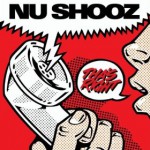
It wasn’t immediate, in fact it was a perfect example of “overnight success” requiring endless hoop jumping over several years of struggle. But in 1984 the band recorded and released an EP called Tha’s Right, which happened to have a song called “I Can’t Wait” as its lead track. By the Spring of 1985, the single “I Can’t Wait” was beginning to generate heat locally and regionally.
In their attempt to either cash in or ruin the band (something for which the label displayed an amazing propensity) Warner Brothers entered into a demo deal with the Shooz, but later passed on them with the curt statement, “We’ve already got Madonna.” Whatever that was supposed to mean. No one ever accused major record companies of knowing anything about music. Bunch of accountants and lunch takers.
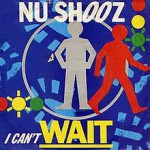
But, fate always being the unseen hand in these sorts of things, in late 1985 some Dutch guy went and re-mixed “I Can’t Wait,” and it immediately started receiving heavy dance club rotation all over everywhere. And with that success, the Atlantic label promptly entered into the picture. And thus began for John and Valerie and Nu Shooz the magical, whirlwind year of 1986.
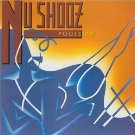
By the spring of that year, the band had completed recording Poolside, their debut album for Atlantic and by September “I Can’t Wait” was sitting at # 3 on the Billboard Hot 100. In October the album went gold. In November, “Point of No Return,” their second Atlantic single release began climbing the Hot 100 chart, stalling at #28, though topping the Billboard Dance charts for a few weeks. At the end of the year the Shooz were nominated for a Grammy for Best New Artist, losing to the madcap Bruce Hornsby and the Range who had a hit with “The Way It Is” and not much else.

After six months of touring, the Shooz returned to the studio to record their follow-up album for Atlantic, Told U So. It took another six months before the album was completed. And in the Spring of 1988 the first single off the new album “Should I Say Yes,” was unveiled—soon peaking at #41 on the Hot 100 charts. The follow-up “Are You Lookin’ For Somebody Nu?” was a bona fide dance hit, but failed to make any of the broader charts. The album broke the Billboard Top 100, but went no further than #91.
Late in1988 the label picked up the option on a third album from Nu Shooz, demanding it forthwith; despite the fact that they had been working incredibly hard, without a break for the preceding four years, and really needed some time off. But, doggone it, you know how those darn major labels are. They don’t have much interest in that whole “creative” thing. They’ve got projections to meet, y’know?
It took four years for the band to complete the tentatively titled Eat & Run in 1992. In that time, however, the national music mood had turned again and Nirvana had arrived in a big way and everything had changed. Nu Shooz really weren’t the flannel types. Four years in real time is like twenty-eight years of label time. Things change very quickly. Empires are built, princes are crowned and it all falls to waste in the snap of a finger. In four years, the members of the team at Atlantic that were behind Nu Shooz were long gone and a new regime was busy looking for the next Pearl Jam. The label unceremoniously dumped the band from their roster before even attempting to release the first single from the album, “Time Will Tell.”
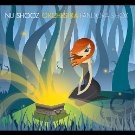
At that point John and Valerie retired the band. It had run its musical course. Times had changed. They each explored their own separate musical inclinations, before John evolved the Nu Shooz Orchestra in 2007, a sort of Pink Martini affair. That organization put out an album a couple of years ago called Pandora’s Box that was a distinct departure from all that had gone before.
Over the intervening years, many have wondered whatever happened to the Eat & Run material, which has never seen the light of day. According to John and Valerie, it’s not likely to. That album, those songs, belong to Atlantic one would suppose. But, during those four years putting the album together, the band gathered together a ton of songs, recording a lot of them.
What we have here in Kung Pao Kitchen is some of the best of that demo material, remixed and re-realized earlier this year. The result is a long walk down a twenty-five year old musical memory lane for a lot of people who might not be able to otherwise remember that far back.
But, before we begin our journey, the lay of the terrain should be established. The songs here were recorded up until 1992. Ostensibly there were overdubs and sweetening that took place this year, but they were done with such care so as to be indistinguishable from the original tracks. With all that in mind: these songs sound dated.
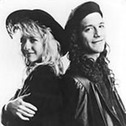
Not the songs so much. The instrumentation and arrangements are really from about ‘87, ‘88. All the brrrpppp-whap-a-kunka drum-machine drums you could want (I believe all drums are programmed here, no drummer listed, though there are human percussionists involved) and a lot of smoochy, squeaky, rubbery synth bass (there are real bassists participating too—good bassists, including Phil Baker). The keys are mostly programmed and sequenced, but Jeff Lorber is in there too among the zeroes and ones. Ultimately, they’ve got that mechanical precision that was so cool at the dawn of the MIDI era.

Nu Shooz music has been described elsewhere as a “suburban pop/freestyle hybrid.” I have not the slightest whit of an idea as to what that might mean. But whatever it is, this material resembles, stylistically and instrumentally, the band’s golden days, circa “I Can’t Wait,” “Point of No Return,” and “Should I Say Yes.” The musicianship is impeccably tight and precise. And Valerie Day’s voice sounds great. It’s possible that she recorded some new vocals as in a few places her voice sounds warmer and fuller than in her more girlish epoch. As if Madonna evolved into Ella Fitzgerald. Well, that’s a bit dramatic, I suppose. But there is a sense of maturation in her voice that comes out from time to time.
The album kicks off with the infectious “Anytime.” The accompaniment is driven by drippy, squirty synth-bass lines and basic slap, smack, and dash drums—with a lot of cool percussion: cowbell in particular, of course. Valerie sings in the sort of muted coo Paula Abdul (later bequeathed to Britney Spears) manifested at about the same time as this song was recorded. Seductive in a moany, purry sort of way. You know the drill.
Melodically the chorus reminds of En Vogue’s “Free Your Mind” (which also came out around just that time, as well), which isn’t exactly much of a coincidence, given that we’re talking about two notes, so what the hey? This song would have made a fine single.
“I Would If I Could” is completely different. The bass sounds real, as do the snare and percussive accoutrements, laid over not a whole lot more than a click track and some squirty keys. But it’s Valerie’s vocal that particularly stands out—Ella buttery—richer and more refined. My guess is these tracks were recorded more recently over the bed of chiming dithery synths. Not a great song, but the band did everything they could do to make it work.

And “Didn’t Want to Tell Ya’” more or less combines the two previous cuts. Valerie in her more smooth voice, fronts the funky motif, propelled by Smith’s slippery slick rhythm guitar phrasings. A nice single-line chorus, fairly memorable, if a bit non-descript. I’m not sure why, but the groove (especially the exotic vocal theme repeated a few times) to “You Put a Spell on Me,” sounds like something Donna Summer might have employed—with the Earth, Wind, and Fire horns thrown in for good measure. Mostly groove, not a lot of content.
The ballad “How Did We Fall in Love” alludes to the Smiths long marriage, dating back to the ‘70s. This song, too, seems to bear a sheen of more recent attention—the arrangement sounding not as dated as some of the others.
The funky “I Just Wanna Talk About You” is driven by a syncopated, kissy synth figure vaguely reminiscent of that on “I Can’t Wait.” A satin sax flurries up at times, in a wailing moan, in all likelihood generated by Maceo Parker (James Brown, Parliament-Funkadelic, etc), because he gets an extended solo in the middle, and he’s listed in the liner notes as taking part in the project. It’s a hot solo, whoever played it. The vocal breakdowns are fresh and a step forward. But, unfortunately the chorus falls flat and doesn’t really go anywhere. C’est la chanson.
Another nice ballad is “Different Kind of Love,” with mellow percussion, including congas, and a nice interplay between keys and rhythm guitar. Atypically, Valerie places her voice up in her throat and face, nearly achieving Madonna’s adenoidal throttle, but the mood is closer to Sade. The band claim this song was inspired by Cheech and Chong’s ‘70s classic, “Basketball Jones,” but, honestly, I can’t hear it.
“Stop Pretending” features several musical flourishes anomalous to much of the rest of the record. In many ways that’s a shame. Because this is really good stuff, of which there should be more. The arrangement here is tougher than the other songs. The drums are punchier than elsewhere. Smarter horn/key charts, not so derivative. Even John’s slinky rhythm guitar has more body and definition. And Valerie sings the verses paired with a male counterpart pitched an octave lower. It all makes for a very solid song—the best execution of the nine songs presented.

The rudiments of “When I Think of You” call to mind Roberta Flack’s “Feel Like Makin’ Love.” Its laid back atmosphere and chromatic chord progressions provide a similar foundation for the Shooz number. Sparse, block-chord keyboards and a funky drum rhythm augment Valerie’s sweet, seductive lead and the ethereal backing vocals. Out of the blue, another sax solo makes an unanticipated appearance, as there are no other horns anywhere else on the track. This again may be Maceo Parker, the intent being: “Hey, he’s here and there’s an open space, go for it.” It’s a bit of a non sequitur, a flagrant solo, comprised primarily of burbling squonks. Odd. Especially for such a low-key, sexy number. If it wasn’t Parker playing, there seems no other reason for the solo to even be there.
Kung Pao Kitchen is very much like a Chinese dinner. There are dishes from Column A and dishes from Column B, with an assortment of sides. Fans of Nu Shooz will really like what’s here, as there are several good singles to be found and plenty of great music, the band sounding just as you remember it. And it would seem that the intent of this release was to appeal to just those fans of the band, not necessarily to seek new converts. Otherwise, ditching some of the drum machine and synth tracks for more modern (and exotic) loops would have been in order. It might have been interesting to hear one cut given to such an experiment.

Still, this is a good, fun album that is bound to remind you of the ‘80s, whatever your references and associations for that might be. And it will remind you too that Nu Shooz was a fun band in a strange, musically transitional era.
Valerie Day’s recent bout with breast cancer, and an appendectomy in June, show no sign of slowing her down. Nor is John retired from the business, moving ahead with the Nu Shooz Orchestra—producing music that continues to evolve and renew itself.



Another great piece of PDX music history from SP Clarke. While there are a few factual inaccuracies, [Ingram not Ingran] (fixed) there’s no reason to quibble here. Mr. Clarke was actually present at the birth of Nu Shooz version 2, when we stole bassist Jonathan Dreschler from Sonya Kazen’s band. In actuality the band started the year before, in May ’79. What he gets right is the ‘flavor’ of the long march to become one of the top Portland Bands. (We had no ambitions beyond that. Never thought we’d get signed by the New-Wave loving record labels.
The first time I was aware of SP Clarke the writer was when he reviewed ‘Tha’s Right’ back in ’85. In that review he said we should maybe try to be more like the English Beat, and new-wave horn bands like that. Thereby he completely missed the point. NU SHOOZ was the ANTI-punk/new-wave band. We were the counter-reformation, calling our listeners back to an earlier aesthetic, of Philly Soul/Steely Dan et al.
Unfortunately he also missed the point of Kung Pao Kitchen, which was to restore this set of 1988 music with as little interference as possible. It would have been easy to tart it up with a lot of modern gestures. We chose to keep it squarely in the late 80’s. Apparently we were successful. He calls Nu Shooz Orchestra a ‘sort of Pink Martini affair.’ I think we had more in common with Max Steiner than Thomas Lauderdale, and once again we were trying to counter Portland’s trend toward light happy happy music and shallow Indie-Pop. Alas, NSO never got up to speed or found an audience.
All that said, SP Clarke has performed a great service to our city as chronicler of one of the best music scenes in the world. His four-part series from TWO LOUIES on the evolution of the 80’s scene deserves a permanent spot on the BUKO website.For that, he deserves our collective gratitude.
John Smith
Nu Shooz Band
Wow. i was in high school working nights at the local supermarket hosing down the meat department’s heavy machinery (i can still smell the pieces of hamburger that were lodged deep in the recesses of the cogs and blades). Point Of No Return was such a high. it transported me to another place, thank god. I rode a street legal dirt bike down aurora avenue from Everett to downtown Seattle just to see these guys at the OZ nightclub! Now that’s back in the day!! anywho, Great article and wonderful comment by John himself. And lastly, yes John, at the time, we did all have a huge crush on your wife, sorry about that 🙂
-peace
Don
Seattle, WA